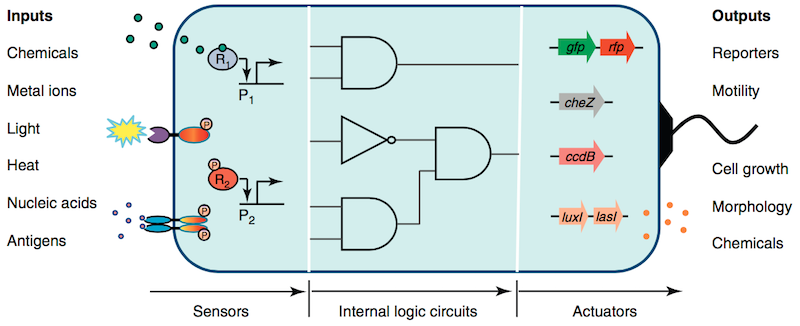Newsletter Signup - Under Article / In Page
"*" indicates required fields
As AI and machine learning approach biotech, synthetic biology is approaching soft robotics. What is it bringing to the field?
Conventional rigid-bodied robots are used to perform specific single tasks efficiently but often with limited adaptability when it comes to interacting with humans. During the past few years, soft robots made of highly pliable materials which allow dexterous mobility have provided an alternative to bridge the gap between machines and humans.
The natural world already has mobile systems made of soft material that show good capabilities. Tube feet in starfish, octopus arms, mammalian tongue, or else elephant trunk are all soft structures that can be twisted and remain functional.
In general, the robotics market is expected to grow from $31B in 2016 to $237B by 2022, say forecasts like Tractica. An increasing number of conferences, collaborations and workshops are organized by prestigious institutions and companies towards soft machines, including Co4Robots, a Horizon 2020 collaboration between groups like KTH University (Sweden) or Bosch (Germany) to develop more interactive robots, and the Soft Robotic Across Scales, London-based competitions organized by Soft Robotic Toolkit and ICSREA (2017 in Italy).
The 2017 IEEE International Conference on Robotics and Automation in Singapore highlighted growing fields such as 3D printing, stretchable electronic and microfluidics. The key challenge for these machines is the development of programmable soft bodies that integrated sensors, actuators, and computation enabling the body to deliver the desired behavior.

Mechanics: Biosensors & Data Storage
The novel field of synthetic biology combines an engineering mindset with biotechnology for medical, agrifood or environmental applications, and it could tackle the challenges that face soft robotics. Its main aim is to standardize and modularize the biological parts, methods, and tools inspired by engineering in order to develop applicable biological devices and systems which do not exist in nature, which therefore has a nice synergy with soft robotics.
For example, genetic and metabolic circuits, two well-progressed fields of synthetic biology, could be implemented within the body of the soft robots for a better interaction with humans and their environment. A large number of biosensors, which receive biological, chemical and physical signals, have been widely developed by engineers and biologists and could equip the soft robots to further bridge the gap.
Signals received by biosensors can be biochemical compounds that pass easily through the soft robot, or they can be physical like temperature and light. The resulting response can be either the production of relevant molecules by enzymatic reactions or again light by the mean of fluorescence or bioluminescence.
What happens to the data collected by the sensors? DNA is increasing used as post-silicon data storage, and DNA computing has received a lot of attention for its potential to be the software of living systems. DNA embedded memory and processors could enable bio-circuits so as to read and write data in memory as well as do much more complex computations.
A program could be coded in the DNA as the software, and the shaped robot running on it learns through environmental interactions and write them into the DNA code or DNA methylation.

Closer to Humans?
How do we imagine these robots? A futuristic perspective could be the additive manufacturing or 3D printing of these machines. For fuel, soft robots of future might be able to eat bacterial cultures to power circuits in the digestive channels.
On the other hand, cell-free bio-circuits could participate in signaling and computation similar to a neural system, since they would not have cell limitations due to cell growth and protein expression. Biological parts inside the soft robot’s body would make it easier to implement super efficient biological machines, like the actin-myosin system of muscles, photosynthesis machinery, and ATP synthase to name a few.
The only attempt to use living cells or biological systems in a soft robot so far involved feeding the soft robot using bacteria that produce electricity as the energy source of the machine. This endeavor speaks to the potential applications of synthetic biology to make these machines even closer to humans.
Biology has newly joined the discipline of engineering. Now is the time to accelerate the speed of technology with combining these two very distinct world which each one is dramatically progressing in the area of research and industry in Europe.


Written by Amir Pandi & Matthieu da Costa, two PhD Students passionate about synthetic biology and technology. Amir is studying at Micalis institute, INRA/AgroParisTech, University of Paris-Saclay, France, and working on biosensors and analog biocircuits. Matthieu is PhD candidate in synthetic biology at Ghent University, having previously been a Research Fellow at Bayer. He is also passionate about Art and AI.
Source: Wang & Buck. Trends in Microbiology, August 2012, Vol. 20, No. 8 ; DOI: 10.1016/j.tim.2012.05.001
Featured Image via josefkubes / shutterstock.com
Partnering 2030: FME Industries Report







